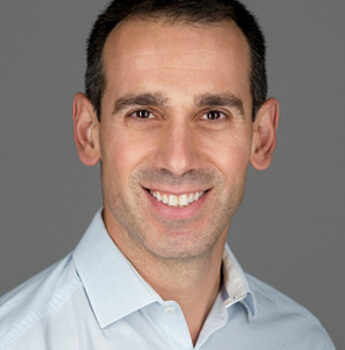
As a radiation oncologist in London, Dr. David Palma spends a lot of his time speaking with patients about their treatment. But a personal experience helped him realize more needed to be done to inform patients about the importance of seeking out high-quality care, and to empower them to seek out the best care for their specific cancer. Palma, who is also an OICR clinician-scientist, just published a book called “Taking Charge of Cancer: What You Need to Know to Get the Best Treatment”, available in bookstores across North America. We spoke to Palma about the story behind the book, why such a book is needed and what he hopes to achieve with it. Palma is donating all royalties from the sales of the book to his local cancer foundation.
What inspired you to write this book?
My best friend was diagnosed with cancer a couple of years ago, at the age of 35. He was diagnosed with a type of cancer that I don’t treat myself, so it didn’t fall within my area of expertise. Nonetheless, I was eager to help out, so we took a series of steps together, to ensure that nothing was missed, the correct tests were done, the right treatment was recommended, and that he received the best care possible. Going through that process with my friend, I realized that this should be done for everybody, but not everyone has an oncologist in their corner as a friend. However, understanding medical records and taking the steps that we took is not rocket science. It’s something many people can do with the proper coaching.
This experience motivated me to create the website www.qualitycancertreatment.com, which I launched about a year ago and has been well-received, with about 30,000 visitors already. But I realized that a patient will only digest so much through a website’s little snippets, and it can be difficult to get a message out in the online world. I realized what was needed was a book to take patients through these things step-by-step, just as I did with my friend, with explanations and checklists along the way, and online videos to help them.
Why did you think a book like this was needed?
There were a few reasons for writing this book. Cancer patients have become better informed than ever. People come in and they often have materials with them from the web and usually have a good idea of the kind of cancer they have and the general treatments for it. But the one thing that’s been missing is that patients don’t really realize there can be big differences in the quality of their cancer treatment, and those differences in quality can have a huge impact in their chances of having a good outcome.
When it comes to cancer care, the quality of care can differ substantially between different hospitals across North America. Patients really have no way of knowing if their care is truly top-notch. So I created this manual for patients – much like a how-to book – to guide them on how to ask the right questions and take the right steps to get quality cancer care.
Have you ever written anything like this before?
No, this is the first time I’ve written a book that is geared towards the public. What really made me excited about this project is that it’s a departure from my usual focus on writing research papers that are geared toward other doctors and scientists. Even though our research can have a high impact, many papers are only read by a handful of people within the research community. This book is totally different because of the style of writing and the size of the audience. The book is written for people who don’t understand medical jargon, and the audience is much larger. I wrote it like I was having a conversation with a patient, using examples and anecdotes – something we often avoid in research. I had such a sense of passion because I was writing something that I knew was unique, and also because I could visualize patients – like my friend – using the book during their cancer journey.
What do you hope this book accomplishes?
My main goal is that patients can make decisions that allow them to be in control of their treatment and be confident that they are getting high-quality care. We know there is much that can be improved. We are not even doing a good job at some of the basics. A study in the New England Journal of Medicine a few years ago surveyed patients with incurable lung or colon cancers who were receiving palliative chemotherapy (aimed at slowing down, but not curing, the cancer), to ask them what the goal of treatment was. About three-quarters of the patients believed that the treatment actually was aimed at a cure. How can patients make good decisions – about treatment and about life in general – if they don’t even know the goals of care? The problem here is that healthcare systems are not doing enough to inform and empower patients. If enough patients start asking for quality cancer care, it can lead to grassroots change in how care is delivered around the world.

